|
Cheney
Bigelow Wire Works in World War Two
1842-1974
- Springfield, MA
1974-1979 Weaverville, NC
This page added 9-11-2022.
The Cheney Bigelow Wire Works made wire cloth
and Fourdiner wire for the paper industry for 137 years at 417 Liberty Street in
Springfield, MA. In May 1962, the company was
purchased by National Standard Company of Niles, MI. In 1972, the
company built a second factory in Weaverville, NC and in 1974 the
Springfield, MA plant was closed when the company headquarters moved to
Weaverville, NC. In 1979, Mount Vernon Mills of Greenville, NC
purchased the Weaverville plant and the Cheney Bigelow name disappeared.

The Cheney Bigelow Wire Works won the
Army-Navy "E" Award three times during World War Two.
The company was notified April 3, 1944 of its first award. The
presentation of the award was made on April 26, 1944.
Cheney Bigelow World War Two Products:
Approximately 40,000 M9A1 rocket launchers (bazookas), artillery
shell boosters.
There were four types of 2.36 inch diameter anti-tank rocket launchers
built in World War Two. The General Electric plant in Bridgeport,
CT exclusively built three of the four types. These were the M1,
M1A1, and M9. For the last and most advanced type the rocket
launchers, the M9A1, the Cheney Bigelow Wire Works was contracted and
produced approximately 40,000 of these weapons between September 1944
and May 1945. The 40,000 unit production was 14.4% of the M9A1s
produced and 8.2% of all types made.
Based on the contract amount shown in Table 1,
each Cheney Bigelow-built M9A1 cost $46.57.
When the contract was terminated on May 17,
1945, the company had to let 250 workers go.
Table 1 - Cheney Bigelow Wire
Work's Major World War Two Contracts
The information below
comes from the "Alphabetical Listing of Major War Supply
Contracts, June 1940 through September 1945." This was
published by the Civilian Production Administration, Industrial
Statistics Division. |
|
Product - Customer |
Contract Amount |
Contract Awarded
Date |
Completion
Date |
| Rocket
Launchers - Army |
$1,863,000 |
6-1944 |
5-1945 |
| Rocket
Launcher Parts - Army |
$102,000 |
12-1944 |
5-1945 |
| Total |
$1,965,000 |
|
|
Table 1 only gives contracts that were more
than $50,000 in value. Because Cheney Bigelow was awarded the
Army-Navy "E" award prior to its involvement with the M9A1 rocket
launcher, the company must have been manufacturing some other product of
importance for the military in a timely manner. The historical
record shows that on December 12, 1944 the company received an order
from Army Ordnance for artillery shell boosters. This resulted in
125 new jobs at the company along with $75,000 for equipment and
tooling. At this point in the war, there was a huge demand from
the U.S. Army in Europe for artillery shells due to continued German
resistance, and many companies besides Cheney Bigelow were receiving
contracts for more artillery shells and their components.
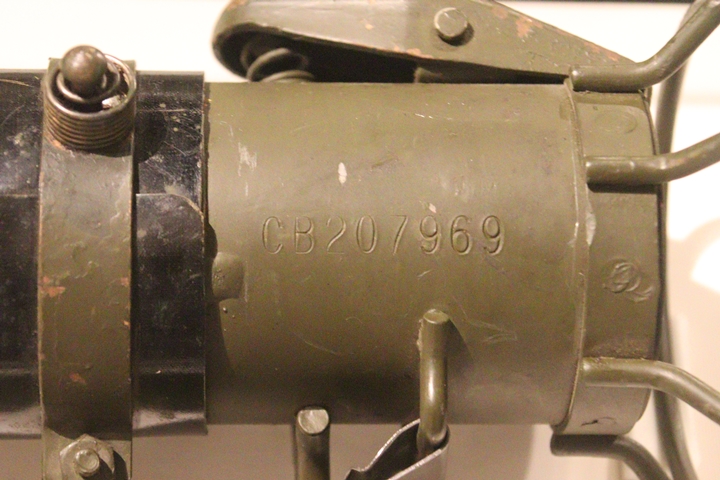
I knew when I saw the letter "CB" in front
of the serial number on this 2.36 inch rocket launcher at the Patton
Museum of Leadership at Fort Knox, KY that I found a very rare weapon.
With Cheney Bigelow only producing 8% of all types of bazookas, this was
a
very important find. All of the bazookas I have previously seen either had GE serial numbers or none, indicating they were
reproductions. Author's photo.
Cheney Bigelow began its serial number series
starting at 200000, so this is number 7969 out of approximately 40,000
made.
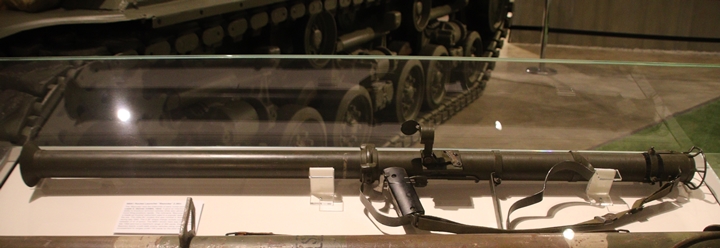
The M9A1 is 54 inches long and made out of
steel tubing. Author's photo.
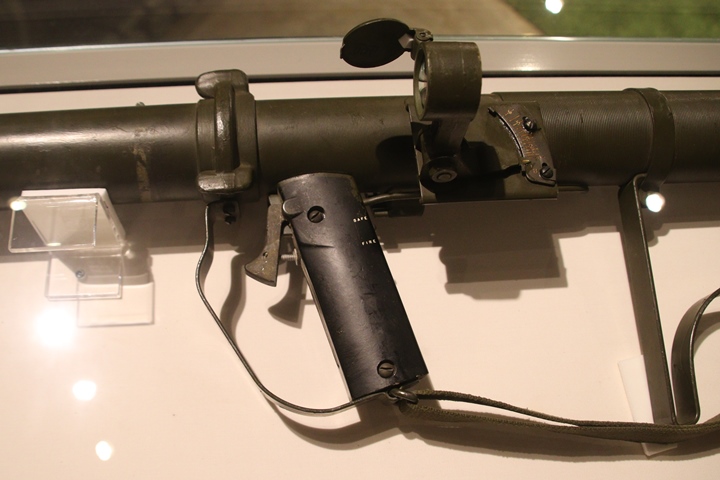
The M9A1 was a foldable weapon. The joints
can be seen to the left of the trigger mechanism. Author's photo.
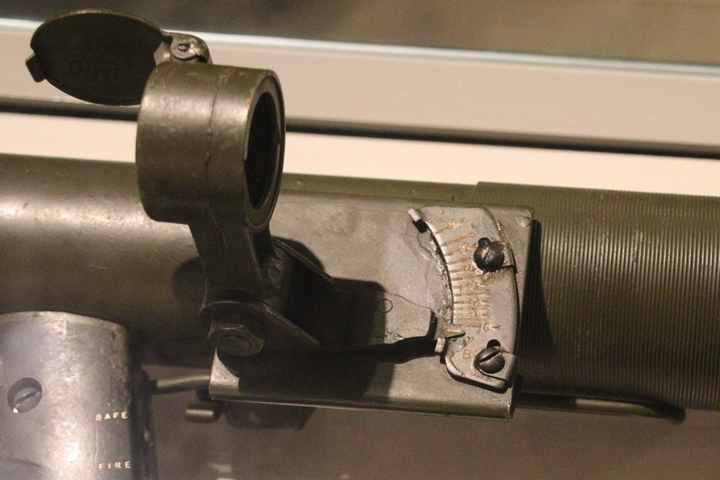
This shows the graduations for elevation for
the sight. Author's photo.
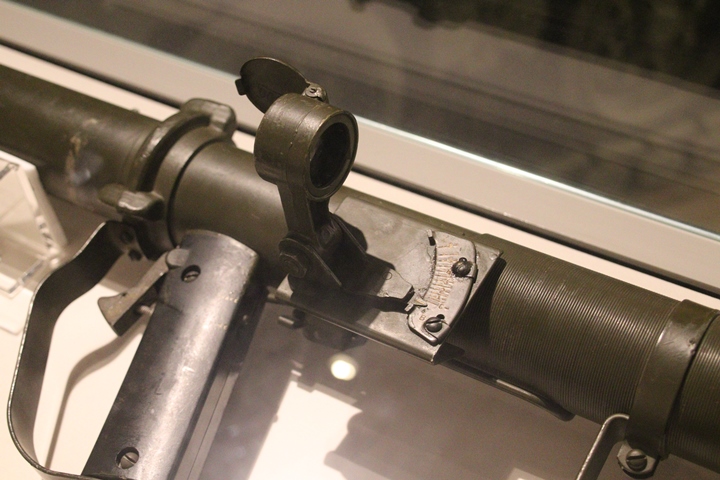
Author's photo.
|





